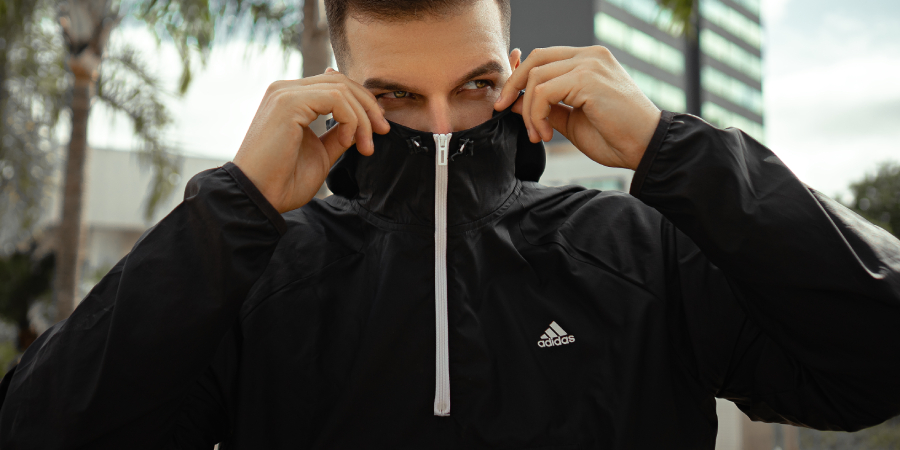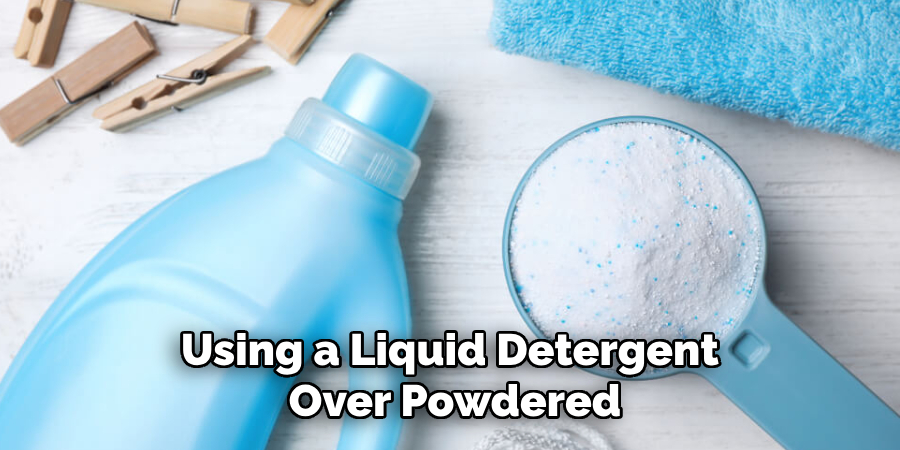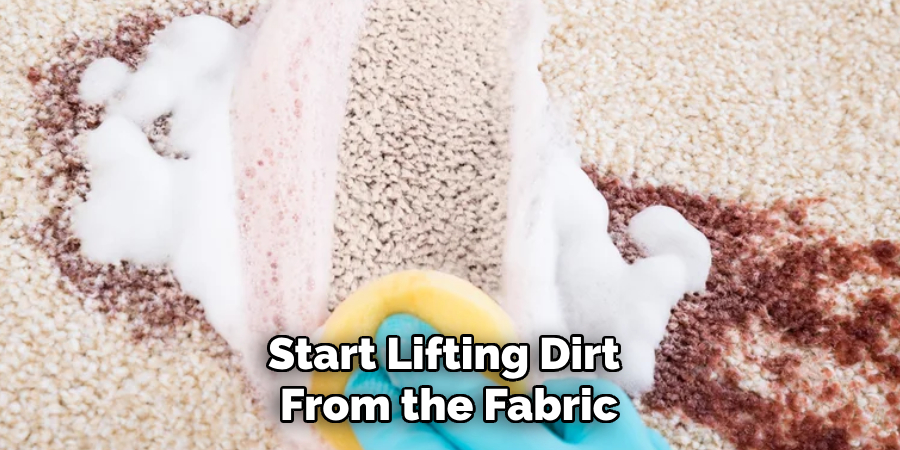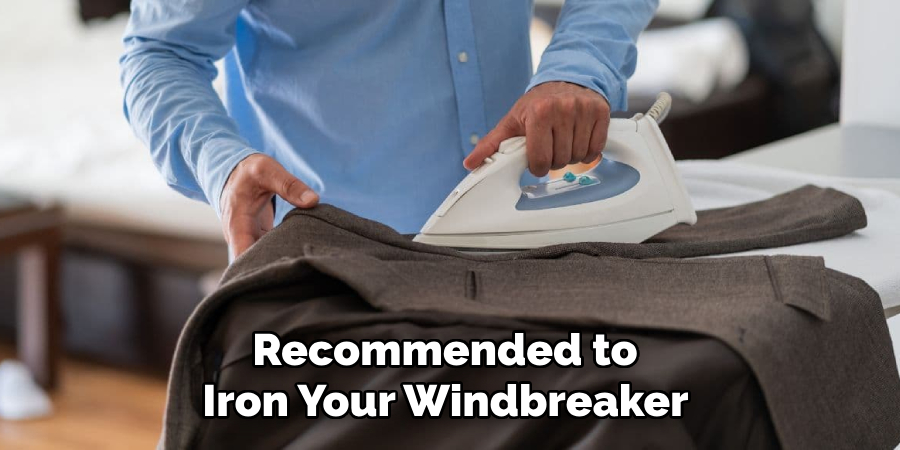Are you looking for an easy way to keep your windbreaker clean and looking its best? Do you want to make sure it stays in good condition, even after months of wear and tear? Washing a windbreaker correctly is essential for maintaining its durability and style.

In this blog post on how to wash a windbreaker, we’ll walk you through the steps necessary to properly wash a windbreaker so that it will last for years! We’ll cover the materials needed, choosing an appropriate detergent, pre-treating stains, cleaning in a machine or by handwashing, air drying tips…and more. Let’s get started on learning how to keep your beloved windbreaker looking fabulous!
What is a Windbreaker?
Before we dive into the details of washing a windbreaker, let’s talk about what it actually is. A windbreaker is a type of lightweight jacket that is designed to protect the wearer from wind and light rain.
It often has a thin layer of insulation or lining for added warmth, making it perfect for outdoor activities in cooler weather. Windbreakers are typically made from nylon, polyester, or a blend of both materials. They can come in a variety of colors and styles, from sporty to fashion-forward.
Needed Materials
GIven below is a list of materials that you will need to wash your windbreaker:
- Mild Detergent
- Soft-bristled Brush or Sponge
- Bucket or Sink
- Cold Water
- Mesh Laundry Bag (Optional)
- Hangers for Air-drying (Optional)
Before you begin washing, make sure to check the care label on your windbreaker. This will give you a better idea of what materials it is made of and any specific instructions for washing. If there are no instructions or if you are unsure, it’s always best to err on the side of caution and use gentle methods.
10 Step-by-step Guidelines on How to Wash a Windbreaker
Step 1: Prepare the Laundry Solution
Fill a bucket or sink with cold water and mix in a small amount of mild detergent. Make sure not to use too much detergent as it can be difficult to rinse out completely. Otherwise, you may end up with soapy residue on your windbreaker. I recommend using a liquid detergent over powdered as it can dissolve easier in cold water.

Step 2: Pre-treat Stains
If your windbreaker has any stains, you’ll want to pre-treat them before washing. Use a soft-bristled brush or sponge to gently rub the stained area with a small amount of detergent solution. Avoid scrubbing too hard as it can damage the fabric. But, if the stain is tough to remove, you can also try using a stain remover specifically designed for the fabric of your windbreaker.
Step 3: Submerge and Soak
Submerge the entire windbreaker in the water and detergent mixture. Make sure it is fully covered with water. If you have a mesh laundry bag, you can put your windbreaker inside it to prevent any damage during washing. It can also help keep any zippers or buttons from snagging on other fabrics. This is especially helpful if you are washing multiple items together.
Step 4: Gently Agitate
Gently agitate the windbreaker in the water. You can do this by swishing it around with your hands or using a soft-bristled brush to gently scrub the fabric. This will help loosen dirt and grime from the surface of this will help loosen dirt and grime from the surface of the fabric. You can also let the windbreaker soak for 10-15 minutes to allow the detergent solution to penetrate and break down any stains.
Step 5: Let it Soak
Once you have agitated for a couple of minutes, let the windbreaker soak in the detergent solution for at least 30 minutes. This will allow the detergent to break down any stubborn stains and start lifting dirt from the fabric. It is important to remember not to use hot water for this step as it can cause the fabric to shrink or damage any waterproof coating. But don’t worry, cold water will still do the trick!

Step 6: Rinse with Cold Water
After soaking for at least 30 minutes, drain the soapy water and refill your sink with clean, cold water. Use your hands to gently rinse out the detergent from your windbreaker. You may need to repeat this step a few times until all of the soap residue is gone. Make sure to gently squeeze out as much water as possible without wringing or twisting the fabric.
Step 7: Air-dry
Air drying is the best method for drying a windbreaker, especially if it has a waterproof coating. You can use hangers to hang your windbreaker up in a well-ventilated area. Avoid direct sunlight as it can cause the colors to fade. You can also drape your windbreaker over a drying rack or lay it flat on a clean towel. Make sure to flip the windbreaker periodically so that it dries evenly. It is important to avoid using a dryer as the heat can cause the fabric to shrink and damage any waterproof coating.

Step 8: Never Iron
Never attempt to iron your windbreaker. The high heat from an iron can melt or damage the fabric, zippers, or buttons. If your windbreaker has wrinkles, you can use a steamer on low heat or hang it up in the bathroom while taking a hot shower. The steam will help relax any wrinkles without causing any damage to the fabric. However, if your windbreaker is made from a delicate fabric like silk, you should take it to a professional cleaner for steaming.
Step 9: Use Caution When Using Bleach
Bleaching a windbreaker can cause the colors to fade or damage the fabric. You should only use bleach on white windbreakers and only if the care label specifically says it is safe to do so. Otherwise, stick to a mild detergent and cold water. You can also use a color-safe bleach if you are unsure about the fabric but still want to brighten up its colors.
Step 10: Store Properly
After washing and drying your windbreaker, make sure to store it properly. If you are putting it away for the season, make sure it is completely dry before storing it in a cool, dry place. Avoid storing it in a plastic bag or an area with high humidity as it can cause mildew to form.
If possible, hang your windbreaker up in a closet or fold and place it in a drawer with other lightweight clothing. This will help prevent any wrinkles from forming while also keeping the fabric protected.
Following these 10 steps on how to wash a windbreaker will help you properly wash your windbreaker and keep it looking like new. Regularly washing your windbreaker can help extend its lifespan and maintain its functionality. So, make sure to give it some TLC whenever it needs a refresh!
Frequently Asked Questions
Q1: Can I Use Hot Water to Wash My Windbreaker?
A1: It is not recommended to use hot water as it can cause the fabric to shrink or damage any waterproof coating. Cold water will still effectively clean your windbreaker. It is best to stick with the recommended temperature on the care label.
Q2: How Often Should I Wash My Windbreaker?
A2: It depends on how often you wear your windbreaker and what activities you engage in while wearing it. As a general rule, if you notice dirt or stains, it’s time to wash it. Otherwise, washing after 3-4 years is sufficient.
Q3: Can I Dry My Windbreaker in a Dryer?
A3: No, it is not recommended to use a dryer as the high heat can damage the fabric and any waterproof coating. Air drying is the best method for drying a windbreaker. If you are in a rush, you can use a low-heat setting or air-only setting on your dryer for a short amount of time to help speed up the drying process. But make sure to check the care label first and use caution.
Q4: Can I Iron My Windbreaker?
A4: No, it is not recommended to iron your windbreaker as the high heat can melt or damage the fabric, zippers, or buttons. If your windbreaker has wrinkles, you can use a steamer on low heat or hang it in the bathroom while taking a hot shower to steam out any wrinkles.

Conclusion
We hope this guide on how to wash a windbreaker has given you the information you need to effectively and efficiently care for your windbreaker. Remember, follow the instructions on the tag above all else.
If possible, practice air-drying and spot-cleaning techniques first before placing them in a washer or dryer. Show your windbreaker some love and it will stay looking good for years to come! So go ahead and wash that windbreaker until it’s Spotless!
Don’t be afraid to get creative with different colors or patterns either – experiment in order to give your style an extra oomph. Lastly, don’t forget the power of a little fabric softener or liquid starch spray after washing and drying for crisp clean folds or lines.
